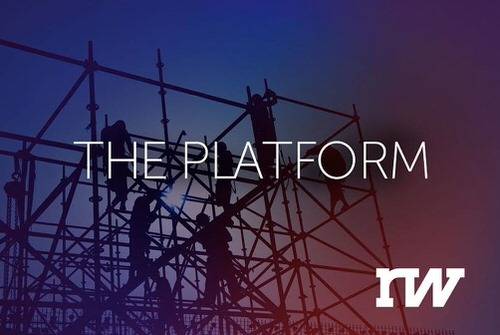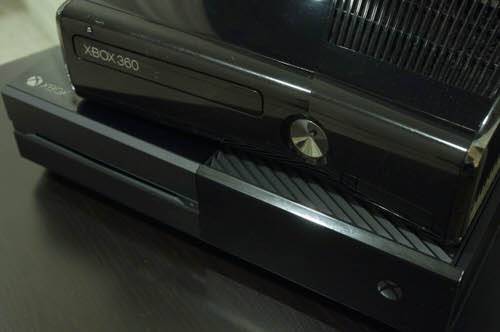
The Platform is a regular column by mobile editor Dan Rowinski. Ubiquitous computing, ambient intelligence and pervasive networks are changing the way humans interact with everything.
The Microsoft Kinect presents a dilemma for me. On one hand, it is one of the most innovative pieces of technology to come out in the last 10 years. On the other hand, it’s a completely unnecessary gadget that adds little value to the experience of the Xbox One.
See also: Playing The Xbox One Long Game, Microsoft Shifts Toward Setting Its Console Free
The Kinect is an exceptional piece of technology. Really, it’s probably the most innovative and creative thing that Microsoft has created in years, and unlocking it for third-party development was one of the smartest moves that Microsoft has ever made.
Did you know that the MIT Media Lab—one of the great bastions of progressive technology research in the world—uses the Kinect for machine vision experiments and 3D imaging? The Kinect is a cheap off-the-shelf solution that allows for MIT students to build interesting projects. The notion of taking infrared cameras and ocular beam forming to create a machine vision device and reducing it to a consumer-grade package and price should be considered one of the technological marvels of the 21st century.
So from an innovator’s point of view, the Kinect is cool. But the technology of the Kinect isn’t exactly the issue when it comes to the Xbox One. Hence the moral dilemma: I want to appreciate the Kinect as a great piece of hardware solving interesting problems, but I find it useless as a consumer product.
Quick Thought: Bigger Screen For The iPhone 6?
Mark Gurman of 9to5 Mac is still on a hot streak with Apple scoops—almost as if he’s gotten a document dump of iOS 8 and iPhone material (either straight from Apple or someone very knowledgeable).
His latest revelation involves specs for the iPhone 6 screen. Gurman says Apple is working on a larger, 1704×960 screen—perhaps a 4.7-inch diagonal. This would keep the iPhone in a 16:9 aspect ratio and make life a little easier on developers who need to upgrade their apps to work on a variety of screen sizes.
iPhone rumors will persist until the Apple’s launch event later this year, but Gurman has basically already told us everything we need to know about the new devices and iOS 8. Apple needs to make bigger phones that people crave while making them cheaper. It appears almost certain now that Apple will accomplish at least one of those goals.
I’ve been using an Xbox One since taking one out on loan from Microsoft after its Build conference in early April(*). Less than two months later, the Kinect isn’t working and I can’t quite figure out what is wrong with it. It says that it isn’t plugged into the console, but I’ve checked all the cables multiple times; it is indeed plugged in to both the television and the Xbox One.
(*) Microsoft “gave” Xbox One consoles to every attendee of the Build conference, including media. I made sure to note that I was taking the device for a loan period for testing and review purposes of both the console and Microsoft services and software.
I’m trying to figure out if I’ve committed some unknown type of user error or the thing is just a piece of junk. But the sudden inoperability of the Kinect isn’t even the biggest issue I’ve experienced with the device.
“Xbox, I Think You Are Confused”

Anybody who’s tried to navigate the Xbox One through the Kinect voice control knows that it is essentially an exercise in yelling at your television. Only the simplest of instructions work with any regularity. You can say “Xbox off” or “Xbox on” and have the Kinect work most of the time.
But going a level deeper, like “Xbox, snap to TV and watch ESPN” is probably not going to work often enough to make you happy. (And that’s to say nothing of the fact that the voice-controlled TV menu through the Kinect is awful.) More than half the time, the Kinect will require you to say the same phrase several times before it hops to the action you are trying to perform. That gets old in a hurry.
See also: Forget PS4 vs. Xbox One: The Console Wars Have Barely Begun
The Kinect is supposed to be always on. That means it will detect motion in the room, recognize users and sign them into their Xbox profile. At various times, the console has turned on at weird times of the day or night because the Kinect glommed onto stray movement.
The cat has turned on the Xbox several times, for instance. Once while I was sleeping on the couch, the Xbox turned on because it saw my foot waggle. The fact that the Kinect is a cloud-connected camera straight into your living room also makes people uncomfortable.
Quote Of The Day: “As demonstrated repeatedly, the future of the open Internet has nothing to do with Title II regulation, and Title II has nothing to do with the open Internet. As it did in 2010, the Commission should categorically reject efforts to equate the two once and for all.” ~ A joint letter by cable companies to FCC chairman Tom Wheeler opposing reclassification of broadband as a utility ahead of Thursday’s net neutrality hearing.
If the Kinect performed with any consistency, it would be great; I’d much rather navigate the console by voice than reach for the wireless game controller. But Microsoft’s vision of an always-on, always watching Kinect is a failure that makes the extra cost of a Kinect as part of the Xbox One package a losing bet.
Giving Consumers What They Want
Microsoft made the right call by unbundling the Kinect from the Xbox One as a mandatory accessory. At $399, the Xbox One is more in line with consumer price expectations and the competition—the Playstation 4, for instance, offers a motion detector accessory for $59, the price equivalent of the Kinect. More important, the Xbox One without the Kinect provides console users an easier, less frustrating experience.
Imagine if Microsoft had followed through with everything it said it would make the Xbox One do at launch:
- Make the console only work if it is always connected to the Internet.
- Make the console only work if the Kinect is plugged connected.
- Make the Kinect always on and always tracking you in your living room.
- Blocked used games discs meaning that you couldn’t buy or sell old games (which would effectively have put GameStop out of business).
At one point, all of the above were requirements for the Xbox One. Sony, to its credit, saw the potential pitfall of these practices and very purposefully built and marketed the Playstation 4 against Microsoft’s self-inflicted weaknesses.
The sales of each console, from price to performance to user experience, have reflected Sony’s superior approach. Microsoft, to its credit as well, is actually listening to consumers (and its balance sheet) and responding to criticism with tangible and beneficial product updates.
Unbundling the Kinect from the Xbox One was a good step for Microsoft. Even though the Xbox One has not matched the new Playstation in sales so far, the console wars between the two are still fairly early. If Microsoft can even the price and expectations while improving the user experience by ridding itself of the Kinect, then it can still win this fight.
Eventually, some game will come out—not Titanfall, it turns out—that every gamer absolutely must have. Whichever gaming platform lands the exclusive on that game will ultimately come out ahead.
More On Microsoft, Kinect And Xbox
- Brian Crecente from Polygon notes, “Microsoft: Dropping Kinect could free up extra processing power in Xbox One.”
- Chris Kohler from Wired believes that Microsoft had no choice but to yank the Kinect.
- Paul Tassi is one of the better video game writers on the Web. He noted for Forbes last month that the Xbox One needs a serious user interface upgrade.
- More from Tassi: Titanfall will see new maps this month, a great thing for users that like Titanfall but feel limited by the amount of content.
- Microsoft is expected to announce a Surface Mini next week at a press event in New York City. An Intel-based Surface Pro 3 is also on the docket, according to The Verge’s Tom Warren. ReadWrite will be on hand for the announcement next week, so stay tuned.
This article has been update to reflect the accurate price of the Playstation 4’s camera accessory.
Lead image by Dan Rowinski. Xbox images by Taylor Hatmaker for ReadWrite.










